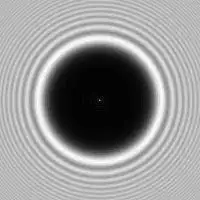To me, as a macroscopic observer of light, it appears that light moves in straight lines. If I shine a light at object A and object B moves between me and object A, the light hits, i.e. gets blocked by object B and no longer hits object A.
However, since light is a transverse wave, doesn't that mean it is oscillating back and forth in space in a dimension perpendicular to its direction of travel? If so, then perhaps it only appears to move in straight lines because of low amplitude or high frequency?
Thus, say there was a radio wave with a wavelength of 1 meter. Could this radio wave then dodge around object B and still hit object A, assuming object B is smaller than 1 meter, say a basketball?
